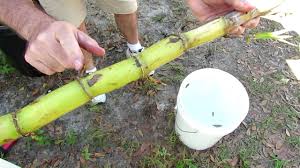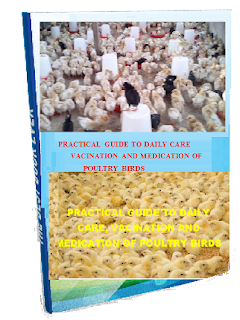HOW TO PLANT SUGAR CANE
1. Select a planting territory that is in full sun. Sugar stick can reach up to 12 feet high and spread 2 to 3 feet over, so check overhead and to the sides for wires, overhang or whatever else the sticks may keep running into as they develop.
2. Extricate the dirt in the planting region to a profundity of 4 creeps by burrowing with a scoop or pitchfork. Separate any expansive lumps.
3. Test the pH of the dirt utilizing a pH test pack from a nursery. The dirt ought to have a pH in the vicinity of 5.5 and 6.5. Blend agrarian lime into soil that has a pH under 5.5 or include peat greenery if the pH is more than 6.5. Include a little at any given moment until the point when the dirt falls into the best possible range.
4. Include matured manure or a universally handy compost, for example, 8-8-8 to the released soil. Blend it in well.
5. Burrow a trench 3 inches profound and no less than 4 inches wide for the stick. On the off chance that you need more than one line, make the trenches no less than 4 inches separated.
6. Place sugar stick begins on a level plane in the trench, and fill it in with the dirt you evacuated while burrowing. Space the sticks 4 to 10 inches separated.
7. Water the planting territory with a soaker hose. Utilize enough water to keep the dirt wet to a profundity of no less than 1 inch constantly, even after the sugar stick starts to develop.
8. Add a layer of soil to the column of sugar stick once it's started to grow. Utilize enough soil to make a slight edge that sits around 3 crawls over the encompassing soil.
Things You Will Need
Scoop or pitchfork
pH testing pack
Horticultural lime (discretionary)
Peat greenery (discretionary)
Manure or generally useful compost
Sugar stick begins
Soaker hose
Tips
Plant sugar stick in the spring, once the ground is warm and sufficiently dry to be worked.
Set up the stick begins by cutting a current length of sugar stick into areas or buying begins from a nursery. Each area ought to have a few hubs.
2. Extricate the dirt in the planting region to a profundity of 4 creeps by burrowing with a scoop or pitchfork. Separate any expansive lumps.
3. Test the pH of the dirt utilizing a pH test pack from a nursery. The dirt ought to have a pH in the vicinity of 5.5 and 6.5. Blend agrarian lime into soil that has a pH under 5.5 or include peat greenery if the pH is more than 6.5. Include a little at any given moment until the point when the dirt falls into the best possible range.
4. Include matured manure or a universally handy compost, for example, 8-8-8 to the released soil. Blend it in well.
5. Burrow a trench 3 inches profound and no less than 4 inches wide for the stick. On the off chance that you need more than one line, make the trenches no less than 4 inches separated.
6. Place sugar stick begins on a level plane in the trench, and fill it in with the dirt you evacuated while burrowing. Space the sticks 4 to 10 inches separated.
7. Water the planting territory with a soaker hose. Utilize enough water to keep the dirt wet to a profundity of no less than 1 inch constantly, even after the sugar stick starts to develop.
8. Add a layer of soil to the column of sugar stick once it's started to grow. Utilize enough soil to make a slight edge that sits around 3 crawls over the encompassing soil.
Things You Will Need
Scoop or pitchfork
pH testing pack
Horticultural lime (discretionary)
Peat greenery (discretionary)
Manure or generally useful compost
Sugar stick begins
Soaker hose
Tips
Plant sugar stick in the spring, once the ground is warm and sufficiently dry to be worked.
Set up the stick begins by cutting a current length of sugar stick into areas or buying begins from a nursery. Each area ought to have a few hubs.




Comments
Post a Comment